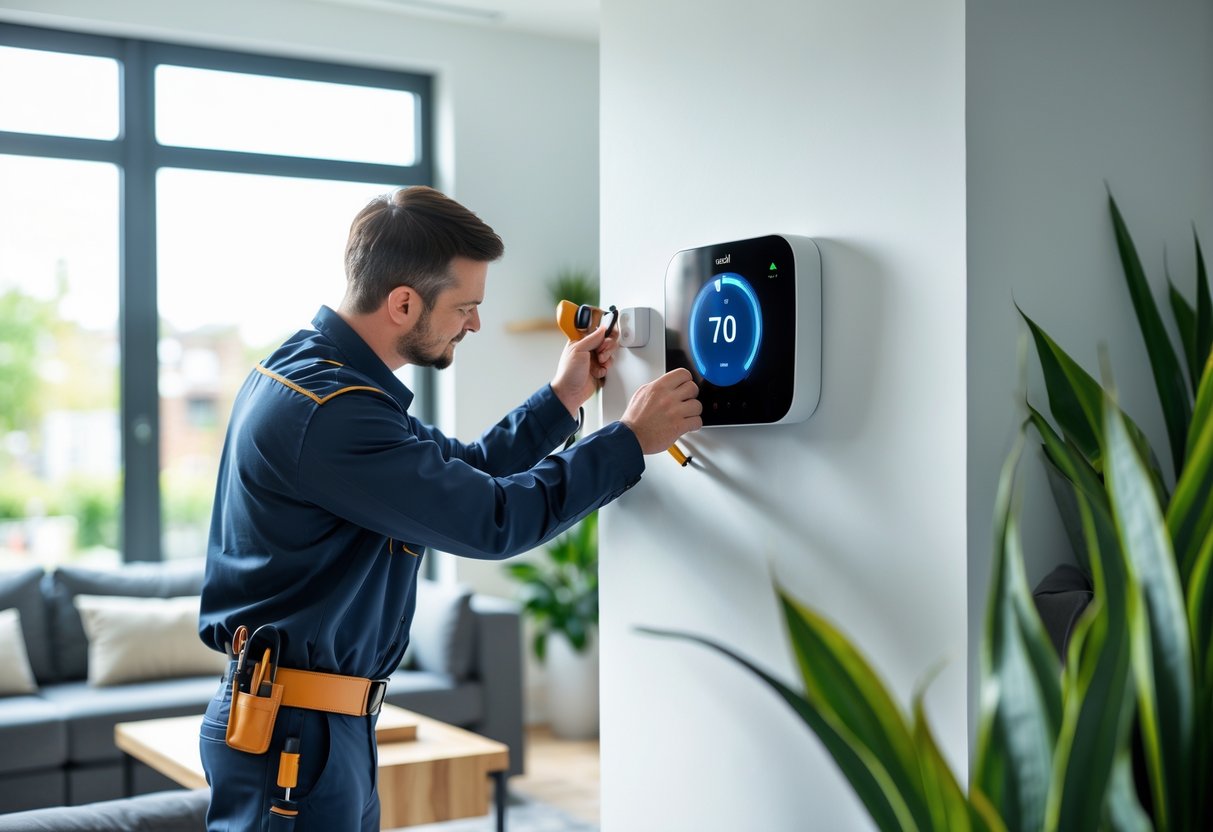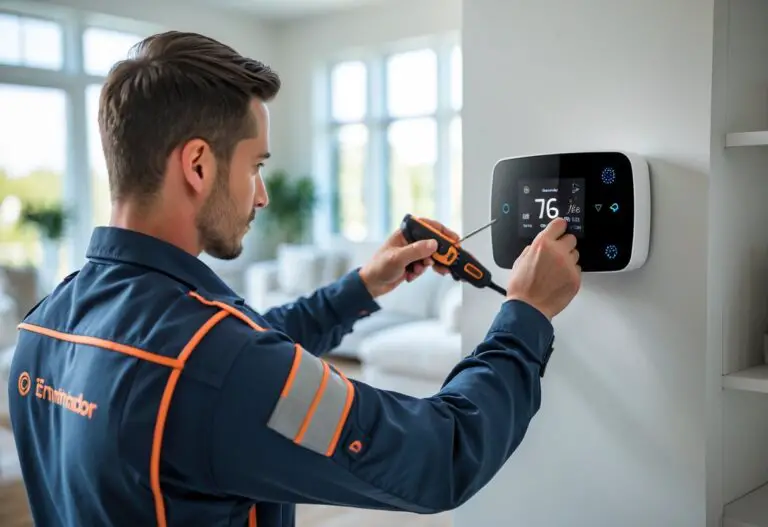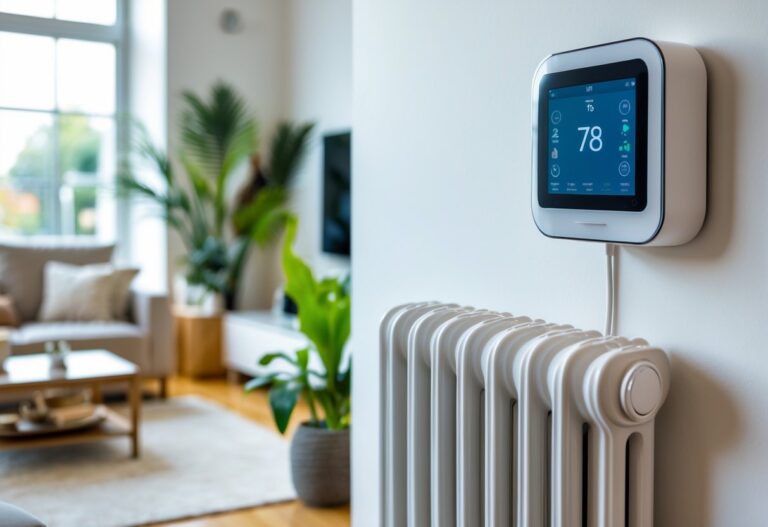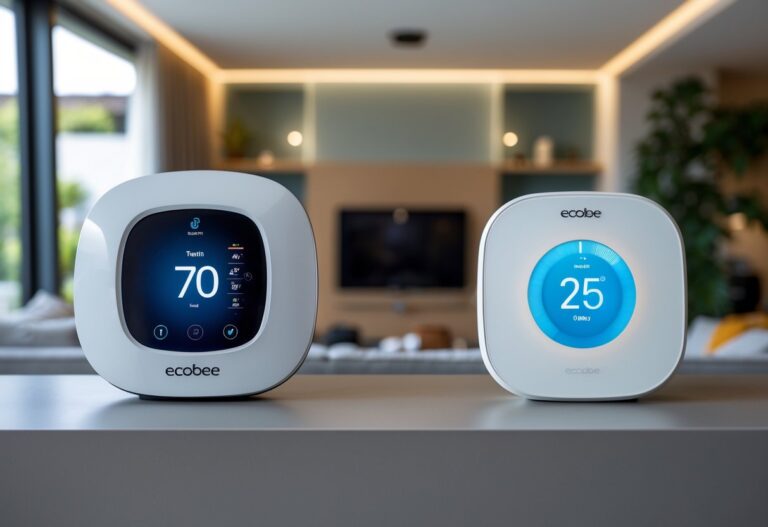Thinking about upgrading to a smart thermostat? Knowing the actual price can help you plan for an easier, more efficient installation. You can expect to pay between $200 and $500 for a new smart thermostat and professional installation, depending on the system you choose and your home’s needs.

Smart thermostats have a range of features like Wi-Fi, remote sensors, and learning capabilities, and basic models might cost less, while advanced ones and complex installations could be more expensive. Some units start around $50, but high-end ones may reach up to $800 before labor.
Key Takeaways
- Smart thermostat installation usually costs between $200 and $500.
- Features and compatibility impact the price of different models.
- Rebates and energy savings can help lower your total costs.
Typical Costs to Install Smart Thermostats
Installing a smart thermostat can mean a noticeable upfront cost, but you can choose among different models and installation types. How much you spend will depend on the thermostat brand, features, and if your HVAC system needs extra work.
Average Price Range
Most smart thermostat installation jobs cost between $200 and $500. This price includes both the device and professional labor.
Basic smart thermostats start at about $70 to $100 if you install them yourself. Higher-end models with advanced features can cost up to $800, especially if you want brands like Ecobee, Nest, or Amazon Smart Thermostats.
Companies often charge $150 to $350 just for labor if you hire an HVAC technician. More complex setups or homes with older wiring may need extra work, which can raise the price up to $1,000.
| Cost Type | Price Range |
|---|---|
| Thermostat (device only) | $70 – $800 |
| Installation (labor only) | $150 – $350 |
| Full installation (typical) | $200 – $500 |
| Complex installs | Up to $1,000 |
Cost Factors Influencing Installation
The age and condition of your HVAC system can affect the total cost the most. Older systems may lack a C-wire (common wire), which is needed by many programmable and smart thermostats.
If your wiring is not compatible, an adapter or extra wiring may be required. This makes installation take longer and can add an additional $50 to $200.
The type of thermostat matters too. Basic programmable thermostats usually cost less for both the unit and installation. High-end smart thermostats with touchscreens, Wi-Fi, and learning features almost always cost more.
Brand also impacts the sticker price. Amazon’s smart thermostat is often cheaper than brands like Nest or Ecobee, but features and support may differ.
Comparison: DIY vs. Professional Installation
You can usually install a smart thermostat yourself if you are handy and your current wiring matches the device requirements. DIY costs mostly come from the thermostat itself, saving you $150 to $350 in labor.
However, if your home is older or your HVAC system is complex, hiring a professional is safer. Professionals ensure correct wiring, avoid damage, and help set up features like app controls and smart schedules.
Most people with modern HVAC systems find DIY installation easy with clear instructions. But if your wiring is confusing, hiring an expert helps protect your system, especially if you’re installing a high-end programmable or smart thermostat.
Types of Smart Thermostats and Associated Prices
Smart thermostats can range from affordable, no-frills units to advanced models with intelligent features and strong connectivity. Price depends on what you need, how much control you want, and which brands you prefer.
Basic Smart Thermostat Options
If you want a lower-cost smart thermostat, basic models cost around $80 to $150. These typically offer remote temperature control using your phone, Wi-Fi connectivity, and simple scheduling features.
Budget-friendly units, such as the Amazon Smart Thermostat (at about $80) and the Sensi Smart Thermostat (about $95), allow you to adjust settings from anywhere. However, they usually lack features like learning your preferences or voice assistant compatibility.
Many basic smart thermostats are ENERGY STAR certified, helping you save energy but without advanced automation. Installation for these can be straightforward, keeping extra costs lower if your system is compatible.
Premium Features: Learning and Connected Devices
Premium smart thermostats cost between $200 and $300 for the device alone, and sometimes more for models with advanced sensors.
These units have features like learning your schedule, adjusting temperatures automatically, working with voice assistants (Alexa, Google Assistant), and offering detailed energy reports.
The Nest Learning Thermostat stands out because it can “learn” your temperature preferences and adjust itself to save energy over time. Devices in this range often include occupancy sensors, geofencing, and compatibility with a wider range of smart home systems.
Professional installation can increase the total spent by another $100–$200, especially if extra wiring or setup is required.
Brand Comparisons: Nest Learning Thermostat vs. ecobee
When comparing top brands, the Nest Learning Thermostat and the ecobee SmartThermostat are two of the most popular options.
| Brand/Model | Typical Price | Key Features |
|---|---|---|
| Nest Learning | $220–$250 | Learns your routine, energy reports, ENERGY STAR |
| ecobee SmartThermostat | $200–$250 | Room sensors, voice control, ENERGY STAR |
The Nest Learning Thermostat is known for its design and how it adapts to your habits. The ecobee comes with room sensors to help manage hot or cold spots, and it supports built-in voice assistants.
Both devices work with major smart home platforms and can help lower energy use, though the way they do it is a bit different. Your final cost depends on features, installation needs, and whether you want to use extras like room sensors.
Maximizing Value: Rebates, Energy Savings, and Incentives
Smart thermostats do more than just control your heating and cooling. They also offer ways to save money through rebates and by improving your home’s energy efficiency.
Utility Rebates and Government Incentives
You may be eligible for rebates from your local utility company or state programs when you install a smart thermostat. Many utility companies offer cash-back incentives ranging from $25 to $100 for qualifying models. These rebates often require you to purchase a thermostat with ENERGY STAR® certification.
The federal government offers tax credits and incentives for energy-efficient home improvements. For example, some programs allow you to claim up to 30% of the cost as a tax credit, with annual limits applying. Certain state and local programs also have extra rebates, so it’s worth checking what’s available in your area.
To claim these offers, keep your receipts and check eligibility guidelines. Some programs may require you to enroll your thermostat in a utility demand response program.
| Rebate Type | Amount | Requirements |
|---|---|---|
| Utility Rebate | $25–$100 | ENERGY STAR certified, proof |
| Federal Tax Credit | Up to 30% | Max $3,200/year, eligible device |
Energy Savings and Efficiency Benefits
Smart thermostats help you save money by using energy more efficiently. Many models learn your habits and adjust the temperature automatically. This can lower your heating and cooling bills by about 8% to 10% each year, depending on your usage and the system in your home.
ENERGY STAR certified thermostats are tested to save energy without sacrificing comfort. Features like remote control, scheduling, and occupancy sensors help to avoid wasted energy when nobody is home. You get both convenience and lower utility bills.
You may notice your energy savings after the first few months, with many households recouping the upfront cost within a few years. By combining smart thermostat features and available rebates, you increase your return on investment.
Key Features and Compatibility Considerations
Modern smart thermostats offer benefits like geofencing, app controls, and the ability to work with existing HVAC systems. Before buying, you should look closely at which features you need and whether your home devices and heating or cooling system are compatible.
Geofencing and Remote Access
Geofencing uses your phone’s location to tell your thermostat when you’re near home or heading out. If you leave, the thermostat can switch to an energy-saving mode. When you return, it can turn the heat or air conditioning back on. This cuts down on wasted energy.
With remote access, you control your thermostat from anywhere using a smartphone or tablet. This means you can change temperatures, set schedules, or get alerts even if you are not at home. Many smart thermostats connect to a special app, making it easy to see usage history and manage settings.
Some models use other features like motion sensors or integration with digital voice assistants (like Alexa or Google Assistant) to help with automation. However, geofencing and remote mobile access are usually seen as the most useful features for daily comfort and energy savings.
Device Compatibility: Smartphone, Tablet, and HVAC System Integration
A smart thermostat must connect to your existing HVAC system—forced air, heat pump, or central air systems are usually supported, but older wiring may need updates. Always check if your HVAC system is compatible before buying.
You’ll also want to use your smartphone or tablet to control the thermostat, so make sure the thermostat’s app works with your mobile device. Most leading brands offer free apps for both iOS and Android devices. Some models support web-based dashboards for computers.
If you use other smart home devices, like smart speakers or home hubs, look for thermostats that integrate easily. Not all thermostats work with all systems, and some may be limited to certain brands or voice assistants. Making sure everything works together will help you get the best results from your new thermostat.





